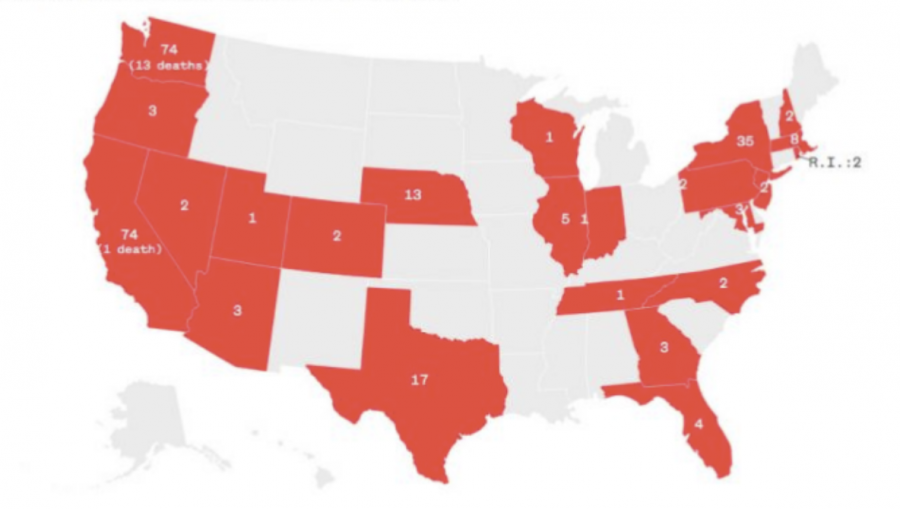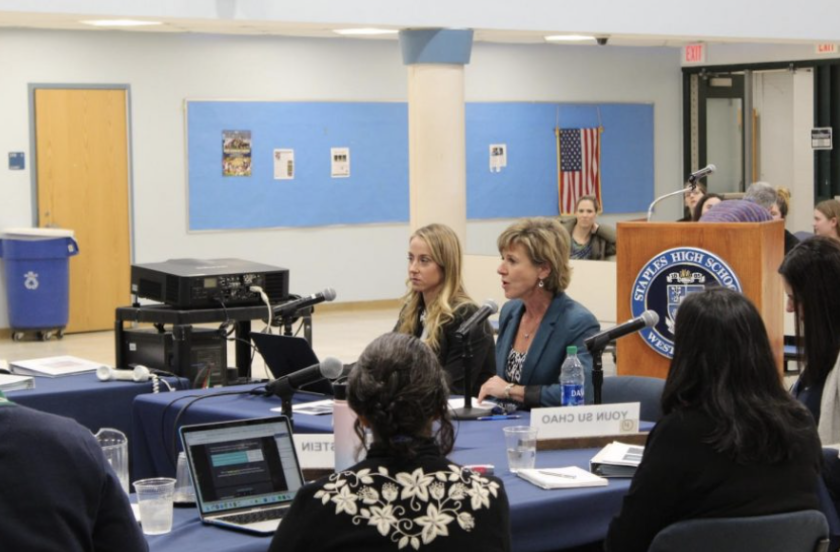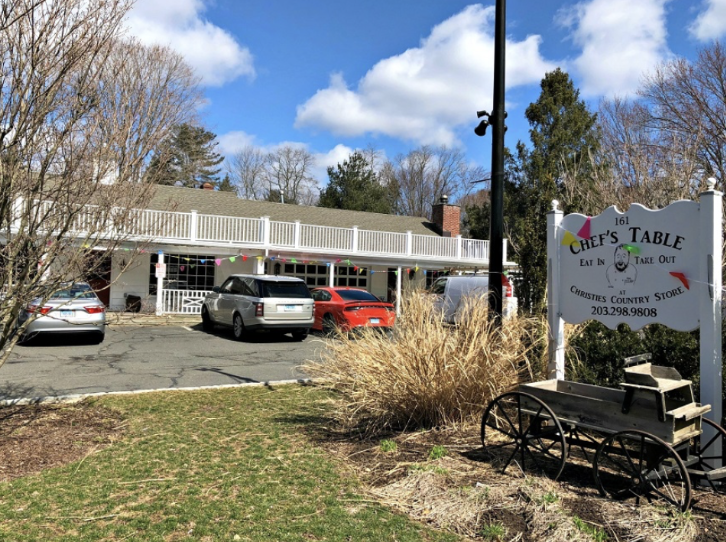Sometime within the next year, the U.S. Supreme Court will decide whether or not affirmative action is constitutional. At Staples, although perspectives vary, many students feel that the policy needs reform because it can lead to injustice: race alone does not always translate to disadvantage.
“I don’t think there should be race-based affirmative action,” Allie Daut ’13 said. “We all work just as hard as the next person.”
The concept of affirmative action was originally established to give preferences to oppressed and underrepresented minorities—notably, African Americans and Latinos—and now, supporters say, it creates diversity at universities and workplaces. Abigail Fisher, who was denied admission as an undergraduate to the University of Texas in 2008, is now taking the state of Texas to the Supreme Court, accusing the university of discriminating against her while favoring African American and Hispanic applicants.
Although the outcome of the case is not yet decided, many Staples students interviewed said they feel that affirmative action should be altered, at least.
Some said they support a reformed affirmative action, one that considers factors beyond race. Students supported policies that gave advantages based on socioeconomic backgrounds, which they believe would help put applicants on a more level playing field.
“It affects how you learn if you don’t have access to computers, to books, to basic materials that we have, but take for granted,” explained Melissa Mann ’14.
Daniel Ciotoli ’13 also found fault in affirmative action’s focus on race alone.
“There are rich and privileged black people and poor underprivileged white people and it’s unfair to generalize based solely on race,” Ciotoli said.
Dr. Matthew Greene, an educational director at a college consulting center, said that, although colleges can give extra consideration to applicants who are the first in their family to attend college, poorer students can be at a disadvantage. For instance, some schools may be less likely to accept a student who requires financial aid, Greene said.
According to Richard Kahlenberg, a senior fellow at a nonprofit research organization, advantages need to be given based on socioeconomic status, not race. The majority of accepted minorities are middle or upper class, Kahlenberg said.
In fact, Kahlenberg felt that without strict racial affirmative action, colleges would be more inclined to consider socioeconomic background, a change that he views as more fair.
Many feel that solely race-based privileges are unfair. Malik Brantley ’13 agrees, seeing the issue from a different perspective. Brantley, an African-American student, deals with the shortcomings of affirmative action firsthand.
“People have made comments like, ‘You’re only getting that track scholarship because you’re black,’” Brantley said.
As a result, Brantley doesn’t see affirmative action as completely positive.
“It helps minorities have better chances,” he said. “But it also opens the floodgates for just more racial jokes and people saying, ‘he only got that because he’s a minority,’ and people also thinking we can’t hold our own without government help.”
Although the majority of Staples students said they see some drawbacks to the current state of affirmative action, there is concern on the national level that the Fisher vs. Texas case may strike down affirmative action, leading to what proponents see as injustice.
Affirmative action was created with the intention of aiding minorities handicapped by the effects of poverty and past prejudice, a concept Brantley identifies with, despite his acknowledgement of affirmative action’s drawbacks.
“I feel like it’s something we deserve because of years of discrimination,” Brantley said.
For James Gildea, a guidance counselor at Bassick High School in Bridgeport, the possibility of an obsolete affirmative action is all too real. At Bassick, the student population is 48 percent black and 45 percent Hispanic, as compared to Staples’ 93 percent white student body. Gildea sees affirmative action as a motivator for his students.
Although he understands its shortcomings as a race-focused policy, Gildea is more concerned with helping his students, the majority of whom are minorities.
“I’m all for them to get a little boost,” Gildea said.
He sees affirmative action as a way to give his students, many of whom come from poverty or an unsupportive home life, a leg up and encouragement to go on to college.
“Affirmative action has its positive notions in that the experience of going to college becomes more of a possibility,” added George Moran, a guidance counselor at Central Magnet High School in Bridgeport.
Even if the Fisher case strikes down affirmative action, there is a possibility that the ideals that engendered affirmative action may still be realized. Moran believes that affirmative action has made a lasting impression in shaping a “culture” of college and making a postsecondary education into an achievable goal for minorities.
Currently though, affirmative action does not only aid minorities, proponents say. It also helps shape a diverse campus. Having evolved into a tool mainly used to enhance diversity on a college campus, affirmative action serves not only minorities, but the entire university.
According to Susan Eaton, Research Director at the Charles Hamilton Houston Institute for Race and Justice at Harvard Law School, diversity creates colleges and workplaces that represent the viewpoints of the country as a whole. “Having a lot of different backgrounds enhances the learning environment, promotes critical thinking and empathy, and breaks down stereotypes,” said Eaton, the author of “The Children in Room E4.”
Lamont Johnson ’14 also noted affirmative action’s role in bolstering diversity and said he feels the policy is necessary at less diverse schools and should even apply to historically black colleges and universities [HBCUs].
“If you’ve watched an HBCU football game, the only white person you see is the kicker, with none even in the stands,” Johnson said.
However, Johnson felt that there should be other, non-applications-based ways to attract minorities.
Outside of Washington, affirmative action plays a role as students take standardized tests or fill out applications. As students bubble in information on the SATs or fill out their Common App, they are asked to categorize themselves by race. For some students, bubbling in this circle is weighted with significance: their race may affect how colleges view them.
According to a 1998 study by William Bowen, former president of Princeton University, affirmative action increases admission chances for African American and Latino students by 28 percent. In a 2004 study of the 146 most selective schools in the country, Georgetown researchers found that the percentage of African American and Latino students had tripled due to affirmative action.
“If I marked my race as Asian, I would be at a disadvantage,” said a student of both Japanese and Austrian descent who asked to remain anonymous. “Because I have a white last name, I put white.”
Megumi Asada ’13, who is Japanese, sees her race as having a less certain effect. Asada feels that her Japanese heritage could demonstrate a diverse heritage, or could hurt her chances if the school categorizes her race within an unspecific “Asian” group.
“Affirmative action could definitely provide a tipping factor in either direction for me,” Asada said.
“I chose black when I’m provided with possible selections not because of the benefits I may receive from it, but because it’s who I identify myself as,” said Jason Karlen ’13, who is half African American and half Caucasian. “Affirmative action does not affect what I check for race, but it angers me to see that my race plays a hand in the determination of what my future might be.”
Only time will tell whether or not race will continue to have such a major role in college applications.
Wesley Horton, an attorney and partner in Hartford who worked on an important Connecticut desegregation case, believes that four justices on the Court will support upholding affirmative action. The other five may opt for a change in the policy, however. The case will be decided by next June, although a resolution could come earlier.
There are a variety of possible outcomes in Fisher v. Texas: the Court may uphold the University’s admissions policy; it may strike down parts of the University’s individual policy; or it may overturn affirmative action and rule that colleges cannot take race into account at all.
Eaton, a director of research at Harvard Law, said she is concerned about possible outcomes of the case; she feels the Fisher case is one of the most important Supreme Court cases in recent history.
“I’m hopeful, but not optimistic, that affirmative action will be upheld,” she said,
Even if the Fisher case takes away affirmative action, various experts said there is a possibility that the ideals that engendered affirmative action may still be realized. Kahlenberg cited that a disproportionate number of minorities are African American and Latino, so if colleges move towards economic consideration, campuses may achieve both diversity and fairness.
Horton, the attorney responsible for persuading the Conn. Supreme Court to take action against Conn. schools’ de-facto segregation in 1989, referenced the resolution reached in that case. The settlement called for an end to racial and ethnic segregation, requiring that some students from Hartford be bused to West Hartford schools. The settlement involved no racial consideration, only a lottery. However, it achieved some level of diversity nonetheless, as Hartford students were generally black, while most West Hartford students were white.
Eaton regards the possible decision to dispose of affirmative action as a challenge in the future. She foresees the civil rights community finding ways to work with disadvantaged or minority groups, increasing recruiting in communities with underrepresented minorities, and offering scholarships, all while emphasizing the importance of diversity.




















































